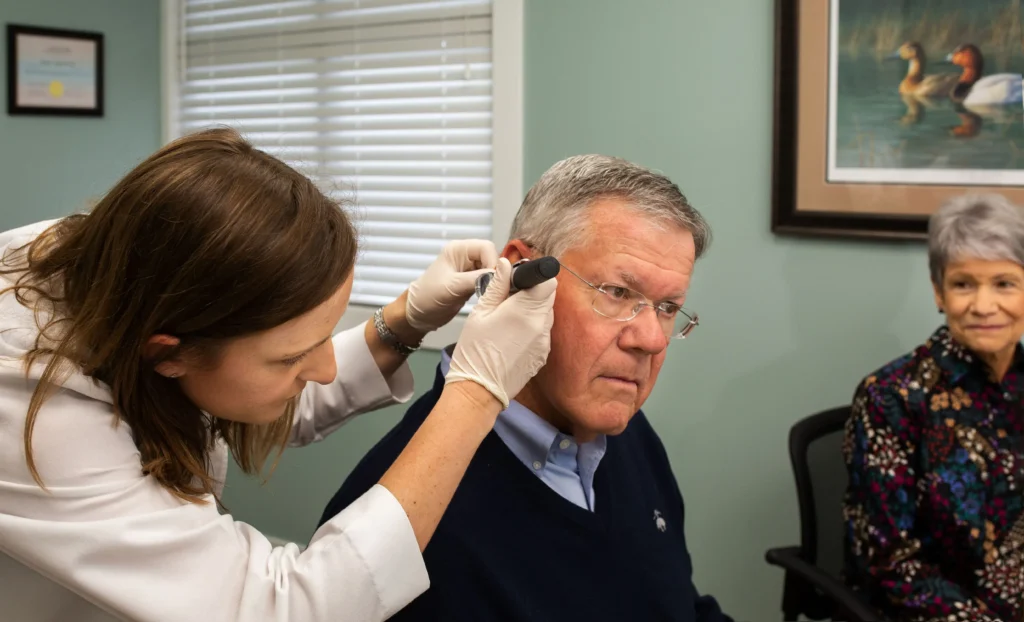A note from Dr. Rierson: In an effort to educate our patients and the communities we serve, I have asked Dr. Julie Perkins to explain a common condition called Eustachian Tube Dysfunction. So often I hear reports of hearing improving when the patient “clears their ears”. Dr. Perkins enlightens us on what this condition is and when to be concerned.
Julie Perkins, M.D.
The eustachian tubes are tubes that connect your ears to your throat. The tubes start at the tympanic membrane (ear drum) and end at the back of the throat. Two important jobs of the eustachian tubes are to allow drainage to leave the middle ear and to equalize air pressure in your ears.
Eustachian tube dysfunction (from now on will be referred to as ETD) can occur in children and adults. This means that the eustachian tubes are not doing their job: not draining the middle ear and not equalizing air pressure in the ears. Symptoms of ETD include a feeling of fullness in the ear, pain in the ear, tinnitus (ringing in the ear), clicking/popping sounds, or hearing/balance problems.

ETD can usually be diagnosed by a patient’s history of symptoms and an examination of the ears, nose, and throat. A primary care physician can usually perform this examination. Sometimes an audiometry examination and tympanometry test are needed. An audiologist may also be able to diagnose ETD through the use of a tympanometer. The tympanometer measures the amount of pressure in the middle ear. The patient is then asked to swallow (swallowing should open the eustachian tubes and decrease the pressure in the middle ear) and the amount of pressure in the middle ear is measured again.
ETD often resolves on its own. If it does not resolve on its own, there are several options for treatment. First, your doctor or audiologist may encourage you to yawn, chew gum, and/or valsalva maneuver (breathing out while using fingers to pinch nose closed and keeping mouth closed). Second, your doctor may prescribe medications. Third, surgery may be indicated.
ETD can affect people of all ages, but it is thought to be more common in children. However, a study published in JAMA (Journal of the American Medical Association) Otolaryngology in 2019 found that the incidence in adults may be higher than previously thought.
Adaptive Audiology Solutions is committed to serving our patients. Thoroughly evaluating hearing and assisting with any ear health needs is central to patient-centered care. The eustachian tubes are an important part of ear health. Please contact us at 712-775-2625 if you would like more information about this topic and other hearing issues.
References
(n.d.). https://my.clevelandclinic.org/health/diseases/22527-eustachian-tube-dysfunction
(n.d.). https://www.ncbi.nlm.nih.gov/pmc/articles/PMC6681559/

